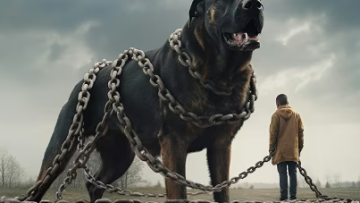Pet Care: A Complete Dog Care Guide for Responsible Owners
Taking care of a dog is both a joy and a responsibility. Dogs bring love, laughter, and loyalty into our lives—but they also rely on us for their overall health, happiness, and safety. Proper pet care isn’t just about feeding and sheltering your dog; it involves understanding their physical, emotional, mental, and social needs. Whether you are a first-time dog owner or an experienced pet parent looking to refine your knowledge, this comprehensive guide offers everything you need to know about dog pet care.
- Nutrition: Feeding Your Dog the Right Way
Nutrition is the foundation of a healthy pet. Dogs require a balanced diet rich in protein, healthy fats, fiber, vitamins, and minerals. Poor nutrition can lead to obesity, skin issues, heart problems, and decreased life expectancy.
Choosing Quality Food
When selecting dog food:
Look for real meat as the first ingredient (chicken, beef, fish, lamb).
Avoid foods with artificial preservatives, fillers, or by-products.
Choose food based on your dog’s age, health condition, and breed size.
Puppies: Need high-protein, calorie-dense diets
Adult Dogs: Require balanced nutrition for daily energy
Senior Dogs: Benefit from joint-support supplements and controlled calories
Healthy Feeding Habits
Stick to a consistent feeding schedule (usually twice a day).
Avoid overfeeding and excessive treats.
Never feed foods toxic to dogs (e.g., chocolate, grapes, onions, xylitol).
Importance of Hydration
Fresh water should always be available. Dehydration can lead to organ problems, fatigue, and digestive issues.
- Exercise: Keeping Your Dog Active and Fit
Regular exercise maintains physical fitness, prevents obesity, improves behavior, and boosts mood.
Tailoring Exercise to Breed Needs
Different breeds have different energy levels:
High-energy dogs (Border Collies, Huskies): need vigorous exercise, running, agility.
Moderate breeds (Labradors, Beagles): enjoy daily walks and playtime.
Low-energy breeds (Bulldogs, Pugs): require light activity to avoid breathing stress.
Types of Enriching Activities
Walking and jogging
Fetch and frisbee
Tug toys
Swimming
Agility courses
Sniffing games (for mental stimulation)
Tip: A bored dog becomes destructive; exercise prevents anxiety and chewing.
- Grooming: Hygiene and Skin Care Essentials
Grooming is more than looking pretty—it keeps your dog healthy.
Basic Grooming Routine
Brushing: Removes dead hair, prevents matting.
Bathing: Every 3–6 weeks depending on coat type.
Nail trimming: Prevents pain and mobility issues.
Ear cleaning: Reduces risk of infection, especially for floppy-ear breeds.
Teeth brushing: Prevents gum disease and bad breath.
Coat-Specific Needs
Long-haired breeds (Shih Tzu, Golden Retriever): need frequent brushing.
Short-haired breeds (Boxer, Doberman): require less brushing but still need cleaning.
Grooming time is bonding time; treat it with patience and reward.
- Training and Discipline: Building Good Behavior
Training shapes a dog’s character and prevents issues like aggression, anxiety, and disobedience. Positive reinforcement is the most effective method.
Basic Commands Every Dog Should Learn
Sit
Stay
Come
No/Leave it
Heel (walk without pulling)
House Training
Crate training, pee schedules, and praise-based rewards make housebreaking fast and stress-free.
Behavioral Correction
Avoid shouting or hitting—these create fear and aggression. Instead:
Redirect bad behavior
Reward good habits immediately
Stay consistent
- Health Care: Prevention Over Cure
Responsible pet care includes regular vet visits and preventive treatments.
Essential Veterinary Care
Annual check-ups
Vaccinations
Parasite control (fleas, ticks, worms, heartworms)
Dental exams
Spaying/neutering
Spotting Early Signs of Illness
Seek veterinary help if your dog shows:
Sudden tiredness or aggression
Loss of appetite
Vomiting or diarrhea
Limping or shaking
Strange lumps or weight loss
Early treatment saves lives and reduces costs.
- Mental & Emotional Well-Being
Dogs feel emotions deeply. Poor mental care leads to boredom, depression, or destructive actions.
Mental Stimulation Ideas
Puzzle toys
Hide-and-seek treats
New walking routes
Obedience and trick training
Social play with other dogs
Emotional Security
Maintain routine (feeding, playing, sleeping)
Show love through touch and attention
Avoid long periods of isolation
A mentally stimulated dog is happier, calmer, and friendlier.
- Safety & Environment: A Secure Lifestyle
A good home environment protects your dog from danger.
Home Safety Measures
Secure toxic cleaners, medications, and foods
Keep trash out of reach
Use fenced yards or leashes outdoors
Provide a comfortable bed and shade
Travel Safety
Use pet seat belts, carriers, or crates. Never leave a dog in a parked car.
- Socialization: Raising a Friendly, Confident Dog
A well-socialized dog is friendlier, calmer, and less fearful.
Why Socialization Matters
Reduces aggression
Builds confidence
Makes vet visits and grooming easier
Socialization Tips
Introduce your dog to new people, dogs, places, and sounds.
Reward calm, friendly behavior.
Start early but any age can learn.
Final Thoughts
Pet care is a lifelong commitment. By focusing on nutrition, exercise, grooming, training, health care, emotional support, safety, and socialization, you ensure that your dog lives a long, happy, and healthy life. A well-cared-for dog becomes a loving family member who brings joy for years to come.







